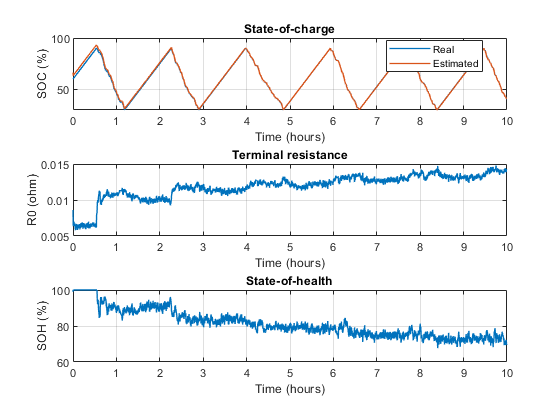SOH Estimator (Capacity-Based)
Libraries:
Simscape /
Battery /
BMS /
Estimators
Description
The SOH Estimator (Capacity-Based) block implements an estimator that calculates the state of health (SOH) of a battery based on the capacity fade. The SOH reflects the condition of a battery relative to its ideal conditions. Health variations imply that the capacity and power of the battery fade over time.
This block supports single-precision and double-precision floating-point simulation.
Note
To enable single-precision floating-point simulation, the data type of all inputs and
parameters must be single.
This diagram shows the structure of the block:

Equations
The cell capacity is an important indicator of the aging of a battery. During the life cycle of a battery, the cell capacity decreases over time. Usually, the cell SOH is 0 when the cell capacity decreases to about 80% of its nominal value.
The SOH Estimator (Capacity Based) block computes the SOH as a function of the cell capacity Q:
where Qeol is the end-of-life capacity and Qnew is the capacity when the battery is new.
Examples
Ports
Input
Output
Parameters
References
[1] Noura, Nassim, Loïc Boulon, and Samir Jemeï. “A Review of Battery State of Health Estimation Methods: Hybrid Electric Vehicle Challenges.” World Electric Vehicle Journal 11, no. 4 (October 16, 2020): 66. https://doi.org/10.3390/wevj11040066.


